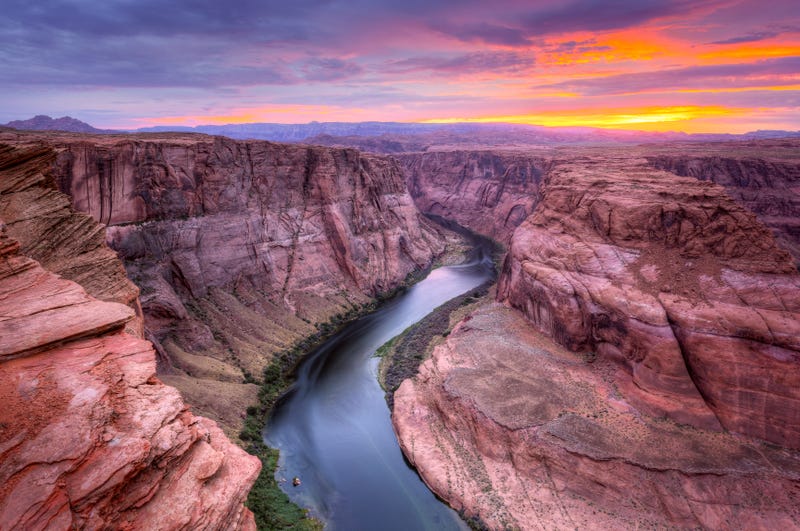
LAS VEGAS (AP) — Facing the future with a dwindling Colorado River supply and intense pressure from the federal government, Arizona, California and Nevada have offered a plan to cut their water use significantly.
The proposal announced Monday isn’t final. It calls for cities, irrigation districts and Native American tribes to accept federal money — and in some cases volunteer — to use less water over the next three years.
The 3 million acre-feet that the states have proposed cutting through 2026 amounts to about 10% of their collective water allocation. An acre-foot is enough water to serve two to three U.S. households a year.
To compensate water users for the cuts, the Biden administration plans to spend about $1.2 billion.
The river that courses through the U.S. West serves 40 million people with drinking water, as well as water for irrigation and hydropower.
The watershed deal broke a stalemate that could have swept the seven states that rely on the river into expensive and lengthy legal fights, though the amount of water offered falls short of what the federal government sought last June.
The plan comes after mandatory and voluntary cuts. It aims to conserve an additional 1.5 million acre-feet by the end of 2024.
California is entitled to 4.4 million acre-feet of water per year, Arizona to 2.8 million acre-feet and Nevada to 300,000 acre-feet.
HOW DOES NEVADA FARE?
The Las Vegas area — with 2.3 million residents and nearly 40 million tourists per year — relies almost completely on Colorado River water drawn from Lake Mead. But due to strict water-use laws and conservation measures, residents and tourists are not likely to notice changes in water supply in coming months. Ranches, farms and rural cities elsewhere in Nevada draw from groundwater and other sources.
Under Monday’s plan, Nevada will conserve about 285,000 additional acre-feet of water, the regional Southern Nevada Water Authority said.
Nevada historically has not used its full allocation of Colorado River water. Famous fountains on the Las Vegas Strip use recycled water, and for the past two decades, the Southern Nevada Water Authority has banned front yard lawns in new neighborhoods from using water. Grass at office parks and street medians is also banned, and home swimming pools are limited in size.
A DEAL HAS BEEN ELUSIVE. WHY NOW?
The states have been struggling to reach agreement since the river manager, the U.S. Bureau of Reclamation, called for swift and dramatic cuts last summer to stave off a crisis. A series of winter storms refreshed mountain snowpack and lowered some of that urgency for now, but the states agree that some reductions are still needed.
Though the federal government has threatened unilateral action since last summer, Reclamation officials didn’t put in writing what that would look like until last month. They proposed two ways of forcing cuts: Relying on an existing, decades-old water priority system, or forcing cuts on a proportional basis across the board. The latter likely would have resulted in drawn-out, complicated lawsuits that few of the parties wanted.
The wet winter, fear of a nasty legal battle and the promise of federal dollars all appear to have helped bring everyone to the table.
“It’s always a concern when states lose control of their own process,” said John Entsminger, Southern Nevada Water Authority general manager.
WHAT HAPPENS NEXT?
Reclamation lifted a May 30 deadline for comment on its earlier proposals so that it can evaluate the environmental and other impacts of the three-state proposal.
Ultimately, a decision is likely to be made by mid-August, when federal officials outline the state of the river for the following year.
If it’s finalized, the agreement will run through 2026, when other regulations and guidelines expire.
